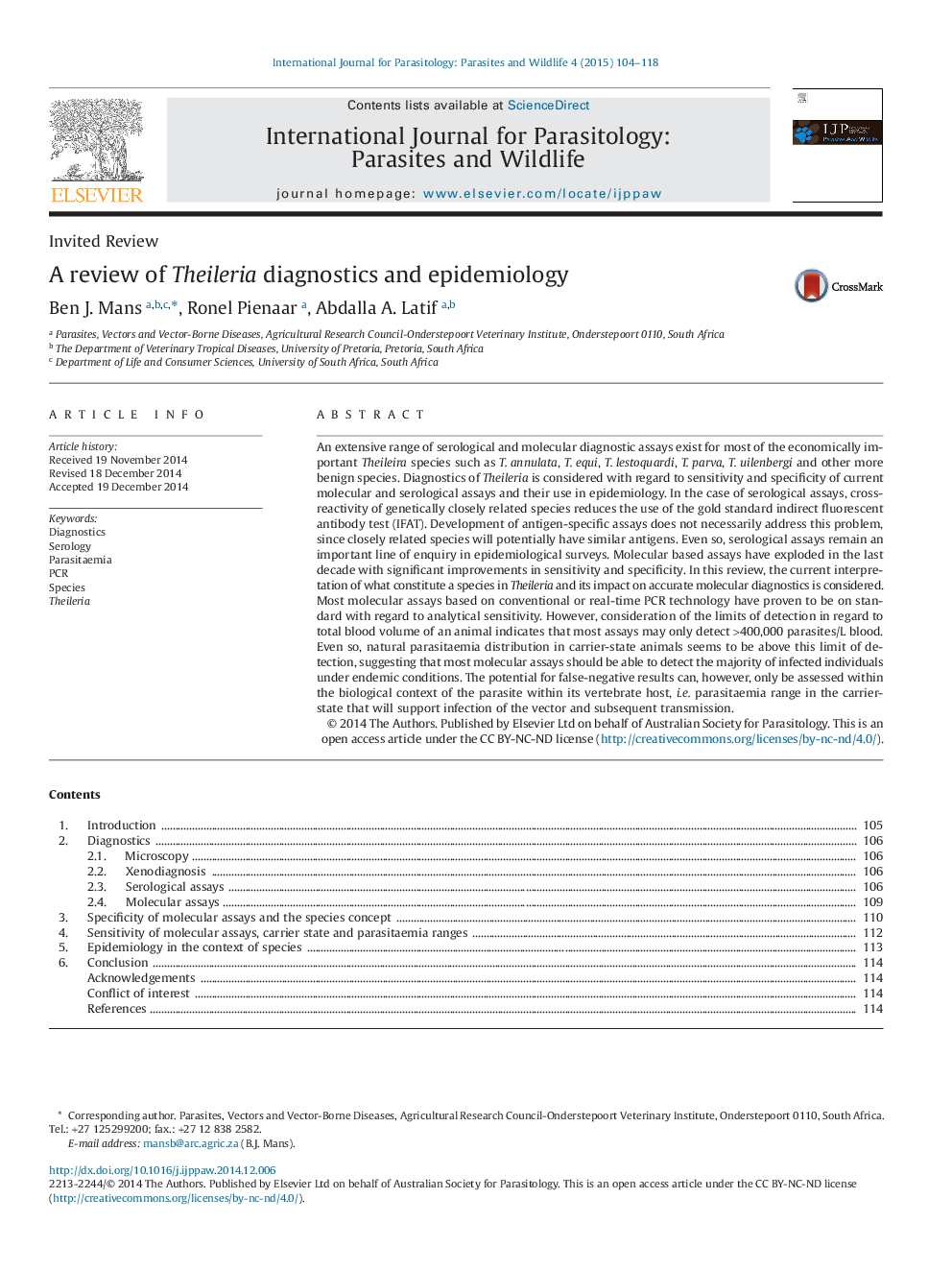| کد مقاله | کد نشریه | سال انتشار | مقاله انگلیسی | نسخه تمام متن |
|---|---|---|---|---|
| 2055174 | 1075732 | 2015 | 15 صفحه PDF | دانلود رایگان |

• Serological and molecular assays exist for most economic important Theileria species.
• Molecular assays are constantly being improved with regard to sensitivity and specificity.
• The concept of what constitute a Theileria species impacts on accurate diagnostics.
• Analytical specificity of molecular assays are >800 000 parasites/L blood.
• Parasitemia ranges may determine practical limits of detection.
An extensive range of serological and molecular diagnostic assays exist for most of the economically important Theileira species such as T. annulata, T. equi, T. lestoquardi, T. parva, T. uilenbergi and other more benign species. Diagnostics of Theileria is considered with regard to sensitivity and specificity of current molecular and serological assays and their use in epidemiology. In the case of serological assays, cross-reactivity of genetically closely related species reduces the use of the gold standard indirect fluorescent antibody test (IFAT). Development of antigen-specific assays does not necessarily address this problem, since closely related species will potentially have similar antigens. Even so, serological assays remain an important line of enquiry in epidemiological surveys. Molecular based assays have exploded in the last decade with significant improvements in sensitivity and specificity. In this review, the current interpretation of what constitute a species in Theileria and its impact on accurate molecular diagnostics is considered. Most molecular assays based on conventional or real-time PCR technology have proven to be on standard with regard to analytical sensitivity. However, consideration of the limits of detection in regard to total blood volume of an animal indicates that most assays may only detect >400,000 parasites/L blood. Even so, natural parasitaemia distribution in carrier-state animals seems to be above this limit of detection, suggesting that most molecular assays should be able to detect the majority of infected individuals under endemic conditions. The potential for false-negative results can, however, only be assessed within the biological context of the parasite within its vertebrate host, i.e. parasitaemia range in the carrier-state that will support infection of the vector and subsequent transmission.
Graphical AbstractFigure optionsDownload as PowerPoint slide
Journal: International Journal for Parasitology: Parasites and Wildlife - Volume 4, Issue 1, April 2015, Pages 104–118